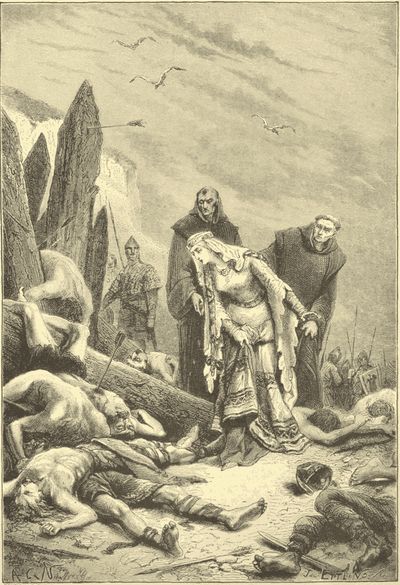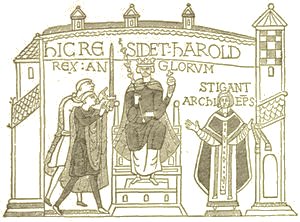 Harold Godwinson, also known as Harold II, was the last Anglo-Saxon king of England. Born around 1022, Harold was a member of the powerful Godwin family. His father, Godwin, Earl of Wessex, was one of the most influential nobles in England, and Harold inherited his father’s title and estates, becoming the Earl of Wessex in 1053.
Harold Godwinson, also known as Harold II, was the last Anglo-Saxon king of England. Born around 1022, Harold was a member of the powerful Godwin family. His father, Godwin, Earl of Wessex, was one of the most influential nobles in England, and Harold inherited his father’s title and estates, becoming the Earl of Wessex in 1053.
Harold's rise to power was marked by his strong leadership and military prowess. He played a crucial role in defending England against both internal and external threats. In 1063, he successfully led a campaign against the Welsh, consolidating his reputation as a capable and decisive military leader. His influence grew significantly during the reign of King Edward the Confessor, who relied heavily on Harold and the Godwin family to maintain stability in the kingdom.
In January 1066, upon the death of Edward the Confessor, Harold was chosen as king by the Witenagemot, the council of nobles. His ascension to the throne was contested by several rivals, including William, Duke of Normandy, and Harald Hardrada, King of Norway. This led to a series of pivotal conflicts that would determine the future of England.
 Harold's short reign was marked by two major battles. First, he faced Harald Hardrada at the Battle of Stamford Bridge on September 25, 1066, where he achieved a decisive victory. However, just three weeks later, he had to confront William of Normandy at the Battle of Hastings on October 14, 1066. Despite his efforts and the valor of his troops, Harold was killed in the battle, resulting in a Norman victory. His death marked the end of Anglo-Saxon rule in England and the beginning of the Norman Conquest.
Harold's short reign was marked by two major battles. First, he faced Harald Hardrada at the Battle of Stamford Bridge on September 25, 1066, where he achieved a decisive victory. However, just three weeks later, he had to confront William of Normandy at the Battle of Hastings on October 14, 1066. Despite his efforts and the valor of his troops, Harold was killed in the battle, resulting in a Norman victory. His death marked the end of Anglo-Saxon rule in England and the beginning of the Norman Conquest.
Harold Godwinson's legacy is a poignant reminder of the tumultuous period of English history during the 11th century. His brief but eventful reign and his role in two significant battles have cemented his place in history as the last Anglo-Saxon king of England.
|
 Harold Godwinson, also known as Harold II, was the last Anglo-Saxon king of England. Born around 1022, Harold was a member of the powerful Godwin family. His father, Godwin, Earl of Wessex, was one of the most influential nobles in England, and Harold inherited his father’s title and estates, becoming the Earl of Wessex in 1053.
Harold Godwinson, also known as Harold II, was the last Anglo-Saxon king of England. Born around 1022, Harold was a member of the powerful Godwin family. His father, Godwin, Earl of Wessex, was one of the most influential nobles in England, and Harold inherited his father’s title and estates, becoming the Earl of Wessex in 1053.
 Harold's short reign was marked by two major battles. First, he faced Harald Hardrada at the Battle of Stamford Bridge on September 25, 1066, where he achieved a decisive victory. However, just three weeks later, he had to confront William of Normandy at the Battle of Hastings on October 14, 1066. Despite his efforts and the valor of his troops, Harold was killed in the battle, resulting in a Norman victory. His death marked the end of Anglo-Saxon rule in England and the beginning of the Norman Conquest.
Harold's short reign was marked by two major battles. First, he faced Harald Hardrada at the Battle of Stamford Bridge on September 25, 1066, where he achieved a decisive victory. However, just three weeks later, he had to confront William of Normandy at the Battle of Hastings on October 14, 1066. Despite his efforts and the valor of his troops, Harold was killed in the battle, resulting in a Norman victory. His death marked the end of Anglo-Saxon rule in England and the beginning of the Norman Conquest. 





